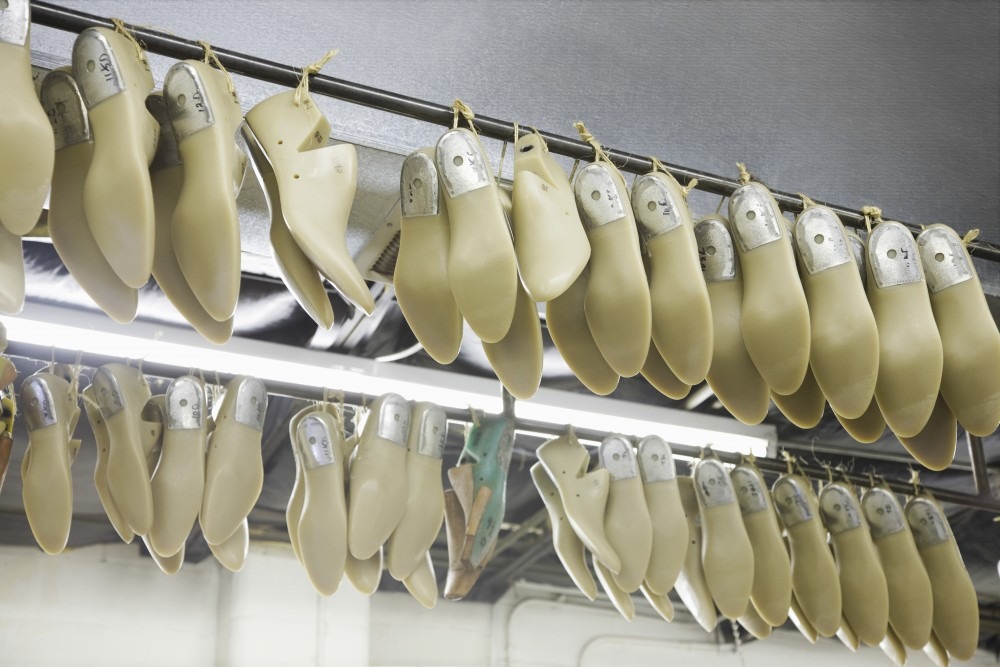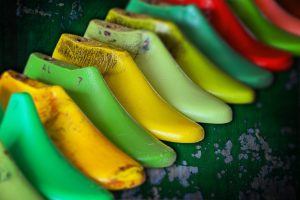 The shoe last is the starting point for any shoe design project and is critical to the shape and function of all types of footwear. The last is used by the shoe factory to determine the shape of the shoe. The last also determines the fit, performance, ergonomics, and style of a shoe. Round toes, pointed toes, low heels, or high heels, these attributes are all determined by the shoe last. These attributes are what make different shoes suitable for running, basketball, hiking, or high fashion.
The shoe last is the starting point for any shoe design project and is critical to the shape and function of all types of footwear. The last is used by the shoe factory to determine the shape of the shoe. The last also determines the fit, performance, ergonomics, and style of a shoe. Round toes, pointed toes, low heels, or high heels, these attributes are all determined by the shoe last. These attributes are what make different shoes suitable for running, basketball, hiking, or high fashion.
With the shoe last in hand, the pattern master creates the shoe pattern to fit the last tightly. Once the design is confirmed, the patterns are graded following the last to make each shoe size. Shoe lasts can be made from injection molded plastic, carved wood, or cast aluminum.
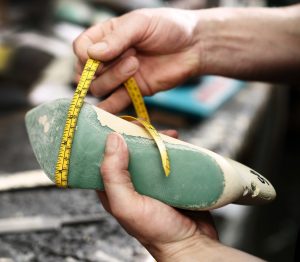 When discussing the attributes of a last, you will need to know the common terms. The majority of measurements are volume rather than the traditional length and width associated with shoe fit.
When discussing the attributes of a last, you will need to know the common terms. The majority of measurements are volume rather than the traditional length and width associated with shoe fit.
Click here to see How Shoe Lasts are Measured
Last making is an art form. A skilled last-maker will have many years of experience and may have gone to last-making school. When making a last, the anatomy of the foot must be considered, especially how the foot shape changes when flexing. When a last is designed for custom shoes, every dimension of the customer’s foot and the desired style must be considered.
Shoe Last Types:
Depending on the style of shoe that is being made the last will need some special features to allow the shoe to release the last. The standard athletic shoe with a floating lace-up tongue can use a solid last. Loafers, Oxfords, and boots will require a last that can articulate so the shoes are not damaged during the de-lasting processes.
Solid Shoe lasts: The most common type of shoe lasts, the solid last can be made of plastic, aluminum, or wood.
Hinged Shoe Last: The hinged last is often used for making fine leather shoes. The last can adjust, allowing easy removal.
Scoop Last: In the scoop last, the instep is removable, allowing a cone of the shoe to be shaped.
Telescoping Last: Used for high boots, the telescope last separates into parts allowing easy removal.
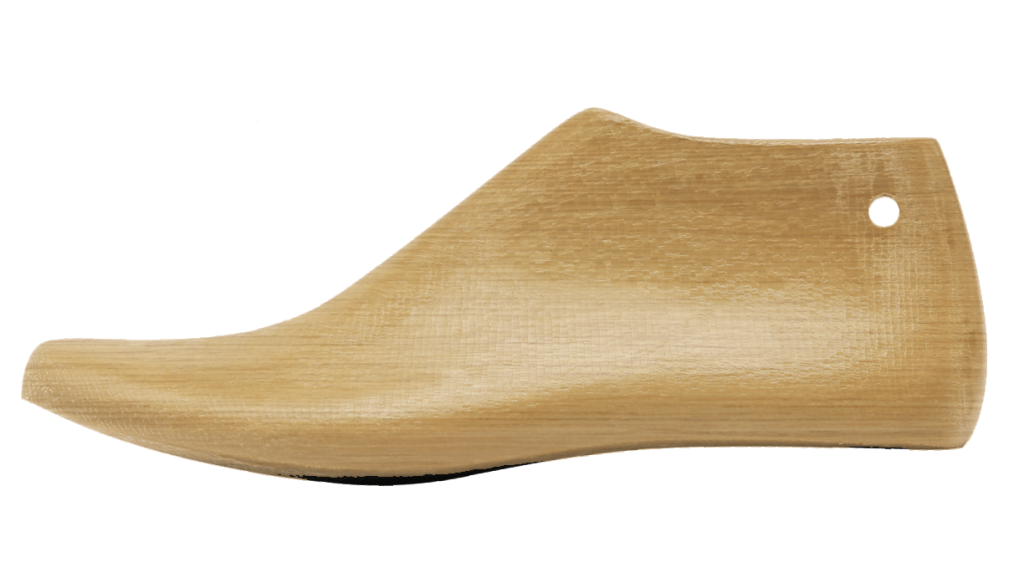
The Wood Shoe Last
The wood shoe last can be made by copy lathe turning, CNC milling, and even hand carving
Pros: Great for handmade, custom one-off, or bespoke shoemaking. Easy to customize with hand tools and can be made for a specific customer. Wood surface accepts nails and tacks required for custom-made shoe construction. Perfect for the handmade high-dollar shoe or the handmade fit testing last. The wood last can be made of solid, hinged, scoop, and telescope last styles.
Cons: Wood lasts are expensive, fragile, and susceptible to warping and rot if damp. They do not agree with heat tunnels or vulcanizing ovens. Wood lasts are not acceptable for modern mass production.
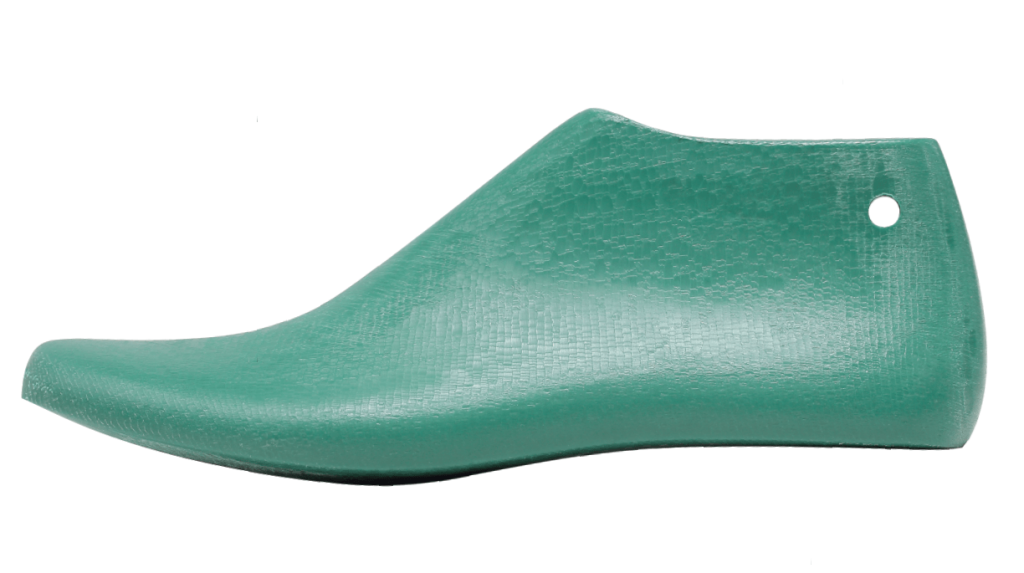
The Plastic Last:
The modern plastic shoe last is made of high-density polyethylene plastic (HMW-HDPE), which allows for many tack holes before needing repair.
The plastic last is made by first injecting a plastic “blank” that is roughly shaped by each size. These plastic blanks are then turned (or cut) by a computer-controlled cutting machine (or lathe). In the turning process, the lasts are rough cut at high speed, then moved to another machine for the final shaping cuts. After turning, the toe and heel are trimmed with a saw and then sanded into the final shape.
Pros: The plastic shoe last is the state of the art for modern shoemaking. Easy to reshape for fitting tests, the lasts can be machined, sanded, and filed. Computer-turned plastic lasts can be highly accurate for precision fitting. Easy to mass produce, impervious to heat and moisture. The plastic shoe last is the workhorse of the modern, high-quality sneaker factory. The plastic last can be made of solid, hinged, scoop, and telescoping styles.
Cons: Plastic shoe lasts can be expensive. They are very durable but they can be chipped, dented, and scratched if subjected to rough handling. Large sizes of plastic lasts for boots can be heavy and difficult for workers to handle. Plastic lasts cannot be used in vulcanizing ovens. They can be more expensive to recycle as they must be chipped and remelted.
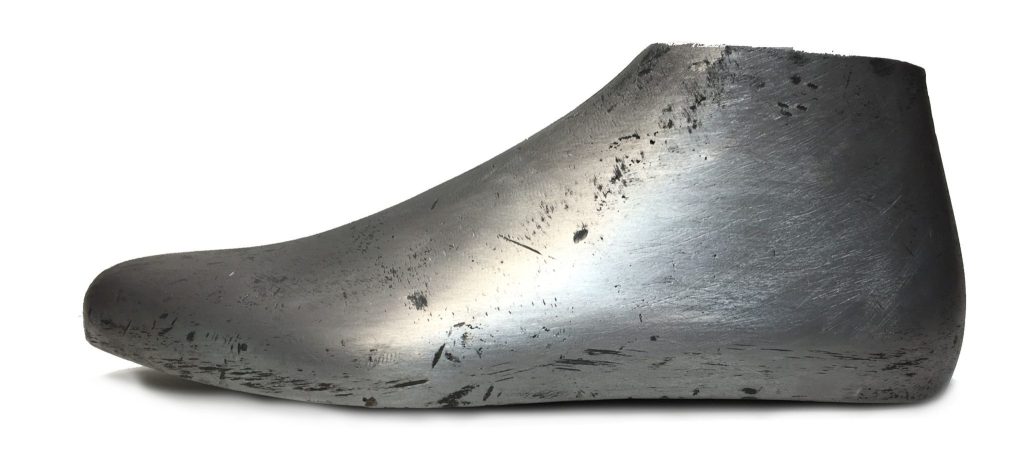
The Aluminum Last
Very common for shoe production, the cast aluminum last is easy to handle in large sizes. Often used for snow boots and for making wellington style rubber boots. Mass-produced in rather primitive casting factories, the cast aluminum lasts are made hollow in sand casting molds.
Pros: The cast aluminum shoe last is cheap, easy to mass produce, and impervious to heat and moisture. The metal last is required for vulcanized shoe production. It is perfect for short production runs, easy to recycle, and made of lightweight aluminum. Cast aluminum is also very durable.
Cons: Shape is not as accurate as wood or plastic. It is not so easy to keep clean. Quality can be suspect. Variations between sizes must be watched. Rough surfaces can damage linings.

